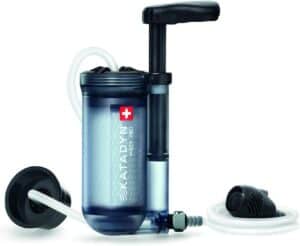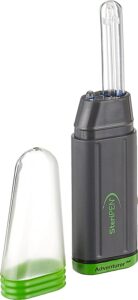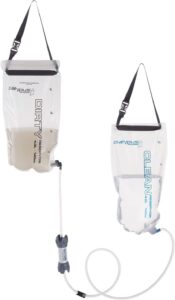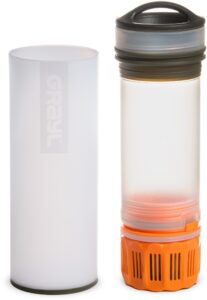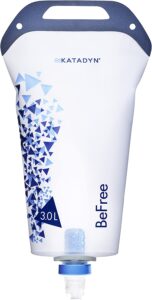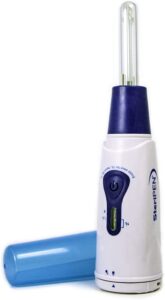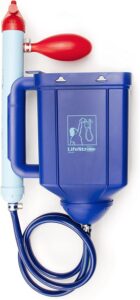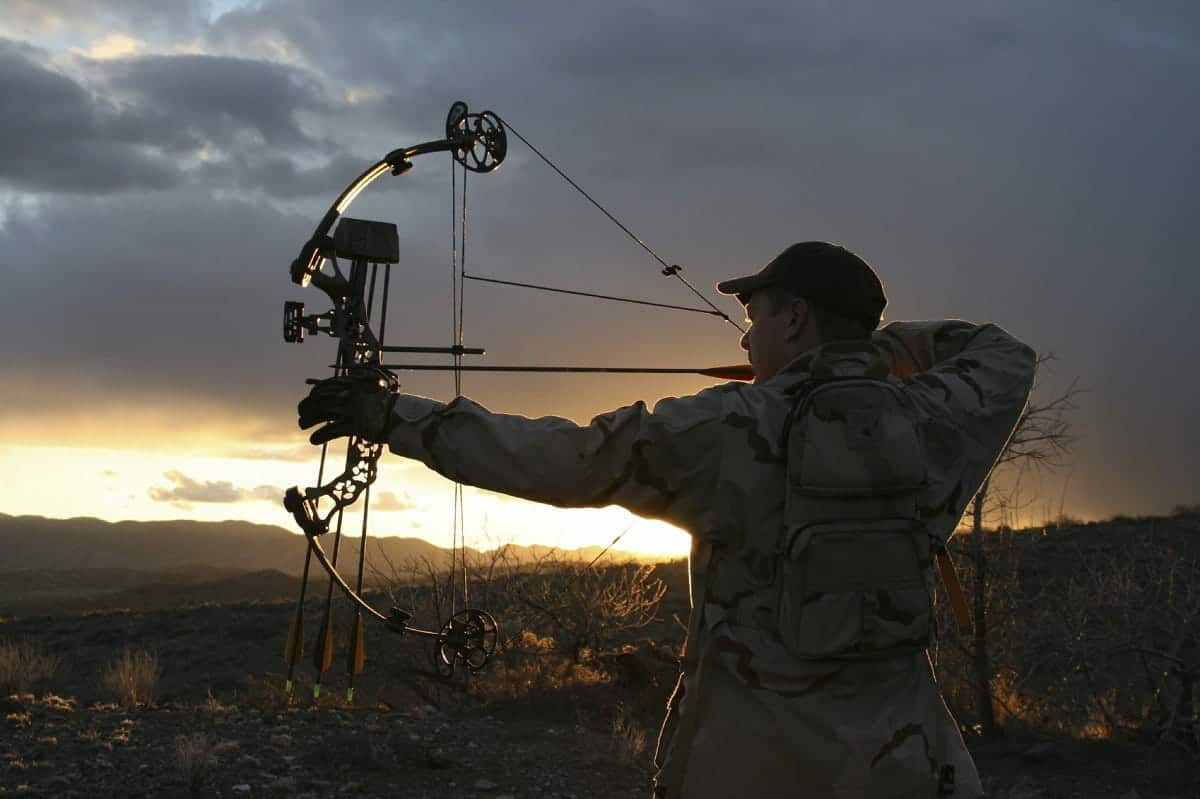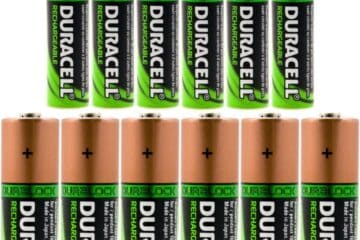The need for water purification is a reality for modern outdoor enthusiasts. While there are still a handful of places where you could drink water straight out of a spring or stream, the reality of drinking water available in the wilderness today needs to be filtered in order for humans to safely consume without worrying about getting very sick.
As a result, there are many great companies out there that continue to innovate in the water purification space. Our list of the 10 Best Water Purifiers will help you identify which filter meets your exact needs and demands. Be sure to also read through our Buyer’s Guide for some essential tips on selecting the right water purifier.
1. Katadyn Hiker Pro
This water purifier is a well-known and trusted option for backpackers because of its’ ultralight, compact size and ability to be compatible with a variety of hydration bladders. It offers a total weight of just 11 ounces and its transparent design allows you to see the filtration system in action.
The Katadyn Hiker Pro provides proven protection against bacteria and protozoan cysts down to 0.2-micron through its pleated glass-fiber filter media. The core of the filter features activated carbon to improve the taste of the water that runs through it and reduces chemicals in that water. It also comes with a field-cleanable filter protector screen that extends the life of the filter cartridge through even the most challenging conditions.
2. LifeStraw Personal
The personal version of the LifeStraw water purifier is an excellent choice for on-the-go use. The purifier’s microfiltration membrane removes 99.999999% of waterborne bacteria, including E. coli and salmonella, as well as 99.999% of waterborne parasites, such as giardia and cryptosporidium.
All LifeStraw purifiers undergo rigorous testing. These claims are verified in laboratories that use standard testing protocols set by the U.S. EPA (1), NSF (2), and ASTM (3). They also offer an incredibly long life with the ability to provide up to 4,000 liters of clean and safe drinking water with proper use and maintenance.
3. Sawyer Products Mini Filter
This mini water purifier is ideal for a variety of outdoor recreation activities, including hiking, camping, scouting, domestic and international travel, and emergency preparedness. It’s a compact filtration kit that included two Sawyer mini filters, two 16-ounce reusable squeeze pouches, two 7-inch drinking straws, and two cleaning plungers.
Sawyer’s high-performance filter fits in the palm of your hand, weighs just two ounces, and contains a 0.1 Micron absolute hollow fiber membrane inline filter. The Sawyer Products Mini Filter removes 99.99999% of all bacteria like salmonella, cholera, and E.coli, as well as 99.999% of all protozoa, including giardia and cryptosporidium.
4. SteriPen Adventurer
Relying upon UV filtration, this water purifier is powered by two disposable CR123 batteries, which are included along with a neoprene case with belt loop. It’s a great water purifier for expedition use and is reusable for up to 8,000 liters.
The SteriPen Adventurer destroys more than 99.9% of harmful microorganisms, including giardia, bacteria, viruses, and protozoa. It’s a safe and effective means of water filtration without altering the taste, pH, chemical make-up, or other properties of the water it’s used on. Additionally, the water sensor can double as an LED flashlight.
5. Platypus GravityWorks
This high-capacity water purification system relies on gravity and a hollow-fiber filter. It’s a great water purifier for group and family camping, outdoor adventures, and emergency preparedness. Once full, there’s no pumping required as the reservoir hangs from a tree and can deliver four liters of filtered water in just 2.5 minutes.
The 4.0-liter Platypus GravityWorks filtration system meets all EPA/NSF guidelines for removal of 99.9999% of bacteria and 99.9% of protozoa, including giardia, cryptosporidium, E. coli, salmonella, and cholera. It also offers a replaceable cartridge that’s capable of filtering up to 1,500 gallons of water when used and maintained properly.
6. GRAYL Ultralight
This water purifier is made specifically for global traveling but also useful for emergency preparedness and a variety of outdoor adventures, including hiking, backpacking, camping, and fishing. It offers a ‘ONE PRESS’ design that makes clean, purified drinking water in just 15 seconds from virtually any fresh water source in the world.
The GRAYL Ultralight water purification system removes 99.9999% of viruses, 99.9999% of disease-causing bacteria, and 99.999% of protozoan cysts. It filters particulates, chemicals, and heavy metals while eliminating bad odors, improving clarity and flavor, and not altering the taste of the water.
7. Katadyn BeFree
This easy-to-use water purifier is ideal for small group camping, backpacking, and emergency preparedness. The Katadyn’s 43-millimeter, wide-mouth opening makes it incredibly easy to fill from any lake, river, stream, or faucet.
Once filled, there’s no pumping required as the HydraPak 3-liter reservoir hangs from a tree or branch and provides up to an impressive two liters of water per minute. The Katadyn BeFree’s 0.1-micron microfilter is tested to protect against harmful organisms and is capable of removing up to 99.99% of protozoa and 99.9999% of bacteria up to EPA standards.
8. Sawyer Products SP160
This one-gallon, gravity-fed water purification system is another great option for small group camping and backpacking. Sawyer’s high-performance 0.1-micron filter fits in your palm and removes 99.99999% of all bacteria and 99.9999% of all protozoa and cysts.
The Sawyer Products SP160 One-Gallon Gravity Water Filtration System contains a lightweight bladder with a wide mouth for easy, fast filling and a convenient handle for easy carrying and hanging. The full filtration kit includes a MINI water filter, 1-gallon bladder, cleaning plunger, cleaning coupling, and gravity hose with adapters.
9. SteriPen Classic
The original battery-powered UV light water purifier from SteriPen is perfect for travel and outdoor use. It can purify up to 150 liters of water on one set of AA batteries, which are not included. It’s capable of destroying over 99.9% of bacteria, viruses, and protozoan cysts.
The SteriPen Classic water purifier can purify a half-liter of water in 48 seconds or one liter in 90 seconds. It’s simple and easy to use, and the device activates when the lamp is placed in water. The SteriPen’s tapered end fits in most commercial water bottles, canteens, or drinking glasses and it can purify up to 8,000 liters of water before it needs replacement.
10. LifeStraw Family 1.0
LifeStraw’s larger water purification system is ideal for family camping and emergency preparedness. It’s a one-liter, gravity-fed filtration system that is now used by more than 13 million people worldwide. It surpasses EPA standards for water purifiers by removing 99.99% of viruses, 99.9999% of bacteria, and 99.9% of protozoan cysts.
This water purifier can process up to 18,000 liters of water without iodine, chlorine, or other chemicals. This amounts to enough clean drinking water for a family of four for up to three years. It comes in a sealed bag that makes it perfect to store for emergency situations and offers a flow rate of 9 to 12 liters per hour.
—
Buyer’s Guide
Many of America’s earliest hikers and well-known vagabonds, such as John Muir (4) and Edward Abbey (5), might have scoffed at the idea of water filtration. They enjoyed water directly from streams and springs without a second thought, but after a few hundred years of extensive farming and agriculture practices on this continent, bacteria like Giardia Lamblia (6) are a real concern.
The question, however, is not whether we need water purification in the outdoors, but it’s more about finding the right filter to fit your specific adventure needs. To simplify this decision, this Buyer’s Guide will focus on three major factors that distinguish filters from one another: types of purifiers, portability, and effectiveness.
Types of Purifiers/Filters
There are many types of filters and purifiers out there. They include pump-action filters, gravity-fed purification systems, ultraviolet purifiers, bottle filters, squeeze filters, and straw-style filters. Of course, there are also chemicals used for water purification and the time-tested method of boiling water to kill bacteria, viruses, and protozoa.
There are pros and cons to each of these types. Pump filters and purifiers tend to offer better all-around performance and the ability to filter larger volumes of water. They can, however, require more maintenance and they take longer to provide that volume of water than other options.
Gravity filters and purifiers are very easy to use and are also great when filtering larger volumes of water, but they are generally pretty slow, require more maintenance, and come with a higher price tag than other options.
Ultraviolet (UV) purifiers excel in the areas of maintenance, ease of use, and speed, but are also typically higher in cost and tend to weigh more than other filtration methods. They also don’t perform as well as pump and gravity filtration systems.
Bottle, squeeze, and straw-style filters outpace the competition in the areas of weight, speed, and ease of use. However, they don’t allow you to filter a large volume of water and they don’t perform as well as other filtration methods, in addition to requiring more maintenance.
As you can see, deciding on the right water purifier depends on how exactly you intend to use it. Do you need to filter large volumes for your whole family? Or is the ability to travel fast and light your priority? Perhaps you want to ensure that you’ll have safe drinking water in even the most challenging conditions.
These are just a few examples of questions you should ask when comparing and contrasting water purifiers. Be sure to know how much water you want to filter, how much time you want to spend maintaining your filter, whether you want to spend hours pumping or simply let gravity do the work for you, and how much weight you’re willing to carry around in a filter. These considerations, in addition to a few others, will help you narrow down your choices.
Portability
Let’s talk a little bit more about portability. This really comes down to how much weight you’re willing to carry in a water filter. If you’re primarily going to be using your filter in group or family camping settings where you arrive and depart from your campsite by way of a motorized vehicle, a little extra weight probably won’t hurt.
However, if you’re heading out for a multi-day backpacking or hunting trip, you likely already have a good bit of weight in your pack and don’t want to add any more unnecessarily. In this case, bottle, squeeze, and straw-style filters tend to be the lightest and most compact water purifiers available.
When considering portability, don’t just ask yourself how much weight you’re willing to carry in a water filter, however. Be sure to also consider how frequently you’ll come across freshwater sources on your trip. The downside of lighter, compact filters can be that they don’t allow you to filter and store enough water to get by for extended dry stretches.
Effectiveness
At the end of the day, it all comes down to effectiveness. If you’re buying a new water purifier, you want to be sure you’re getting one that’ll actually filter bacteria, protozoa, and viruses and prevent you from getting sick in the backcountry.
Fortunately, all of the water purifiers we mention above have been extensively tested and most filter out more than 99.9% of all potentially disease-causing materials. However, if effectiveness is your ultimate deciding factor, pump filters and purifiers are largely considered to offer the best in all-around performance.
If you’re really worried about filtration, many experts recommend utilizing two methods of filtration and/or purification before drinking water that could potentially contain harmful bacteria, protozoa, or viruses.
Frequently Asked Questions
There are four major steps to industrial water purification (7). Although we don’t generally need to use all four steps when filtering water in the wild (especially if it’s coming from high-alpine, glacially –fed lakes), it’s important for us to know as much as possible about proper purification and how we maintain the purifiers/filters that we use to guarantee safe drinking water when we’re out on extended wilderness adventures.
This Frequently Asked Questions section will provide additional knowledge on the use, maintenance, and storage of water purifiers.
How often should filters be backwashed or cleaned?
This specific answer depends on the exact type of filter you choose to buy. Each manufacturer will have recommended cleaning and maintenance instructions for their product. However, any time you notice the flow rate of a filter or purifier diminishing, you should generally consider it time to clean or backwash it before further use. In addition, you should always clean/backwash a filter or purifier before extended storage or after it has been stored and you’re ready to start using it again.
What is considered a ‘good’ and ‘bad’ water source to filter from?
In general, streams that are steadily trickling their way through a maze of roots and rocks are going to be a safe source to filter from. However, it’s impossible to see whether the source is a quality one with the naked eye. So, here are a few criteria for ‘bad’ water sources that you should avoid:
- Puddles or standing water sources with no inflow or outflow, as well as those that animals regularly drink from.
- Beaver ponds. Beavers are well-known spreaders of giardia.
- A waterfall or cascade. These sources can have more suspended solids that interfere with purification.
- Large rivers just downstream from towns, especially if they’re close to industrial or mining activity.
- Orange or red colored water that contains a lot of dissolved tannins. These are most common in heavily forested areas in late fall.
- A stream that runs through cultivated fields or animal pastures.
- Water that’s running down a tread way or water bar. These tend to contain more sediment.
How do I avoid getting mold in my hydration bladder?
Mold will form inside of hydration bladders that aren’t properly cleaned and dried after every trip. To avoid this, make sure to bring your bladder inside, thoroughly wash it out, and hang it to dry before you head out for your next trip. If you do notice mold inside a hydration bladder, you can try to kill it using chlorine dioxide tablets or boiling water (depending on the exact manufacturer of the bladder and whether it can withstand water up to such temperatures).
Summary
Giardia is no joke, and it can seriously derail any of the best-laid plans for outdoor adventure. These ten water purifiers will help to guarantee you, and your friends, safe drinking water for the duration of your trip and allow you to focus on the fun you’re heading out to find. We hope you’ve found this article useful and we wish you the best of luck in selecting your next water purifier.
